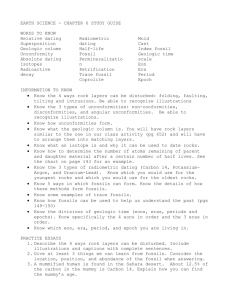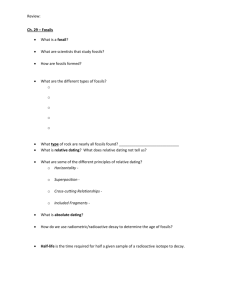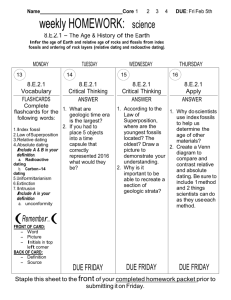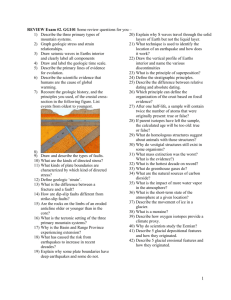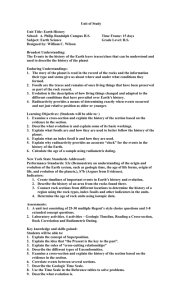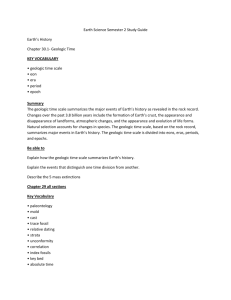Name
advertisement
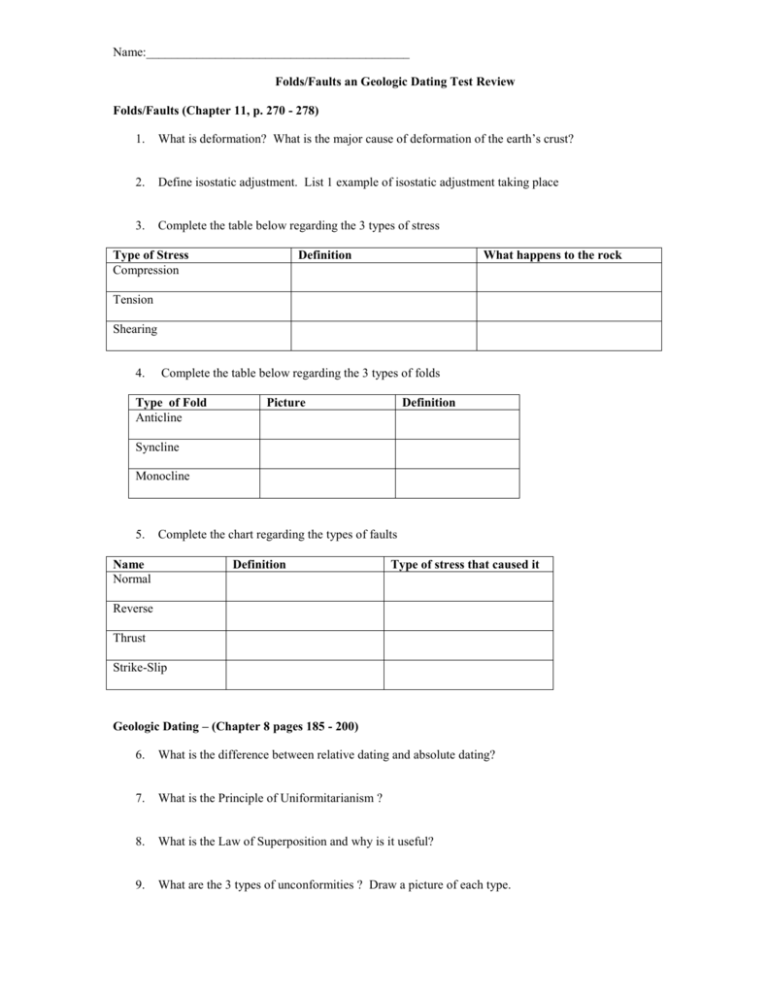
Name:__________________________________________ Folds/Faults an Geologic Dating Test Review Folds/Faults (Chapter 11, p. 270 - 278) 1. What is deformation? What is the major cause of deformation of the earth’s crust? 2. Define isostatic adjustment. List 1 example of isostatic adjustment taking place 3. Complete the table below regarding the 3 types of stress Type of Stress Compression Definition What happens to the rock Tension Shearing 4. Complete the table below regarding the 3 types of folds Type of Fold Anticline Picture Definition Syncline Monocline 5. Complete the chart regarding the types of faults Name Normal Definition Type of stress that caused it Reverse Thrust Strike-Slip Geologic Dating – (Chapter 8 pages 185 - 200) 6. What is the difference between relative dating and absolute dating? 7. What is the Principle of Uniformitarianism ? 8. What is the Law of Superposition and why is it useful? 9. What are the 3 types of unconformities ? Draw a picture of each type. 10. What is the Law of Crosscutting Relationships? 11. What are radioactive decay and half life? How are they used to determine the absolute age of a rock layer? 12. What is carbon dating? How is it used to determine the half life of wood, bone, shell, organic remains? Why is it only used for “young” objects? 13. What is the definition of the following types of fossils? Mummification Amber Tar Beds Freezing Petrification Trace Fossils Imprints Mold Cast 14. What are index fossils? What criteria have to be met in order to be an index fossil? 15. What type of rock are fossils found it? Why? 16. What has to happen in order for an organism to become a fossil? ****There are no essays on this test BUT there is a diagram with rock layers and you have to order it from youngest to oldest and give a geologic history



